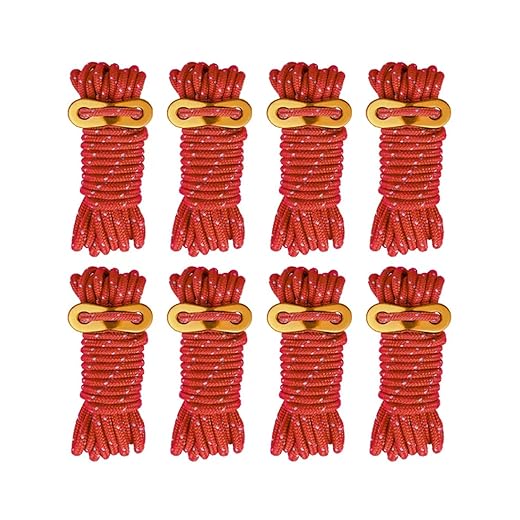Why These Six Camping Knots Will Make Camping Easier for You.
We’ll teach six essential camping knots, explain why they matter, and guide you through practicing them until they become second nature. With simple steps and safety tips, you’ll be able to tie reliably, adjust tension, secure gear, and feel confident on your next camping trip.
What We Need
Master These 3 Essential Survival Camping Knots
Bowline: The Reliable Loop
Want a loop that won’t slip but unties easily? Here’s the camping classic we always trust.Start by forming a small loop, the “rabbit hole.”
Form the bowline by passing the free end up through the hole (the rabbit comes out), around the standing part (around the tree), then back down through the hole (the rabbit goes back).
Dress the knot by tightening evenly: pull both the loop and the standing line snug so the turns sit neatly. Use the bowline whenever we need a secure, non-jamming loop for rescue, tying a guyline, or securing gear; for example, we sling a bowline around a log to haul wood without the knot tightening closed.
Keep the tail at least three rope diameters long.
Practice by loading the loop and checking for slippage. Back up the bowline with a half hitch or two for critical applications.
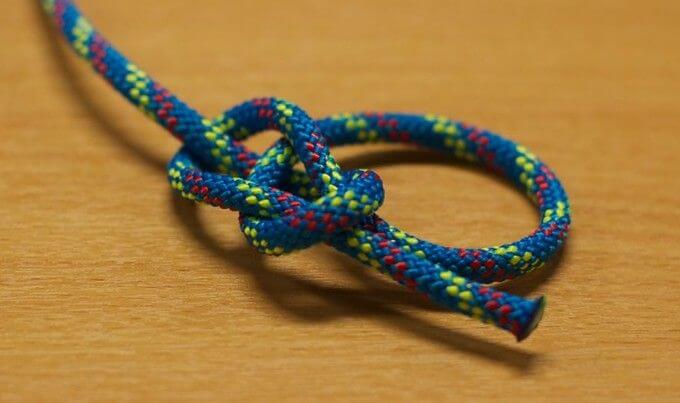
Clove Hitch: Fast and Adjustable
Need to tie quickly to a post or pole? This snappy hitch is our go-to starter knot.Make two turns around the object, crossing the second turn over the first, and tuck the working end under the last turn.
Dress the knot by pulling both the standing part and the working end so the turns sit neatly.
Use it to temporarily secure a rope to a post, tent pole, or tree. This is ideal for starting a guyline or quickly attaching a tarp ridge.
Practice tying it with one hand and reversing direction so we can set it quickly while hauling gear or rigging a tarp.
Add a half hitch or two behind it when the load may shift; the clove hitch can slip under intermittent load.
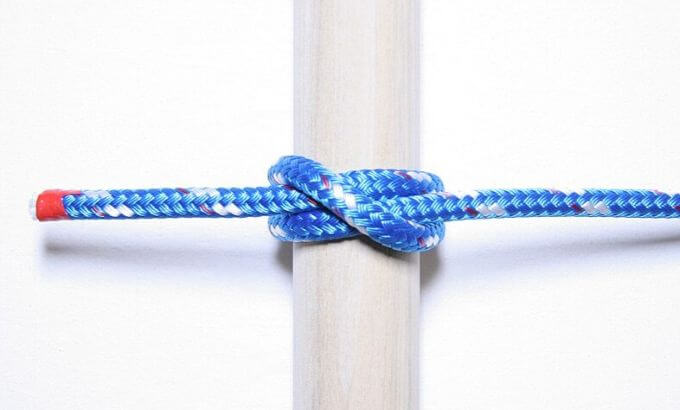
Figure-Eight: The Stopper That Saves Gear
Want to prevent ropes from running through hardware or fraying on edges? This simple stopper keeps us calm.Create a loop about hand-sized. Pass the tail around the standing part, then feed it back through the loop so the knot forms a clear figure-eight. Dress the knot neatly and tighten by pulling both the standing part and the tail.
Use it on tent guylines, as the start of a follow-through in weight-bearing systems, and to make easy-to-grab ends on long ropes. We rely on it when a line mustn’t slip through a grommet or pulley. When a tarp starts sliding through a grommet, a figure-eight will stop the problem instantly.
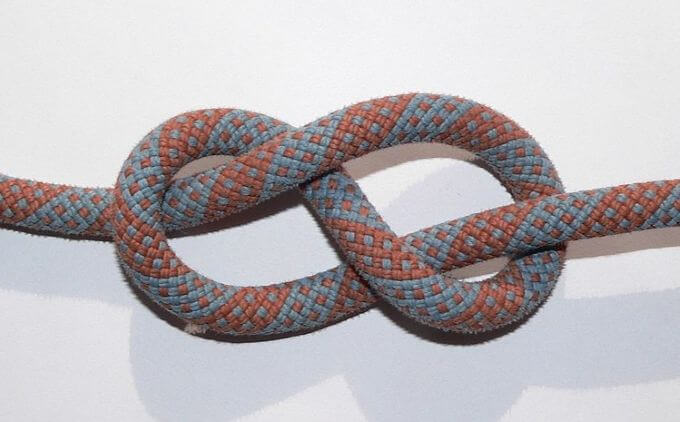
Taut-Line Hitch: The Adjustable Tensioner
Want a tensioning knot that adjusts under load? We rely on this for tight, tweakable guylines.Tie the taut-line hitch as follows.
Use it on tent guylines; we once tightened a tarp during gusty winds, and it held steady while we adjusted.
The taut-line hitch creates an adjustable loop that holds under tension but slides when deliberately loosened. It’s ideal for tent guylines and clotheslines. Wrap the working end twice around the standing part on the inside of the loop, then make one wrap on the outside and dress snugly. Slide the hitch to adjust tension, then load it to lock in place. We test this knot with our tent setup in varied winds to ensure it holds. For slick rope, add an extra wrap inside for more friction. Remember that orientation matters. The two inside turns should face the load.
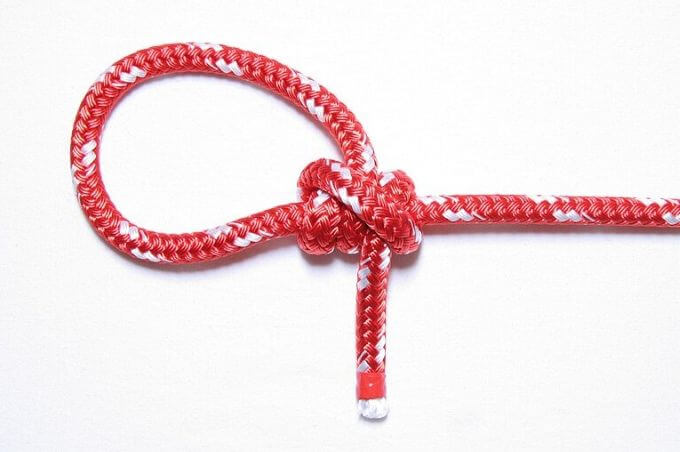
Trucker’s Hitch: Power to Cinch
Need a brutal mechanical advantage to cinch a tarp or load? This knot gives us near-tractor strength.Make a fixed loop (we like a figure-eight on a bight) about midway along the line.
Run the working end around your anchor, tree, stake, or truck rail, then feed it back through the loop to create a pulley.
Pull the working end hard to gain mechanical advantage and snug the load or tarp.
Finish by securing the working end with a couple of half hitches or a slip knot for easier release.
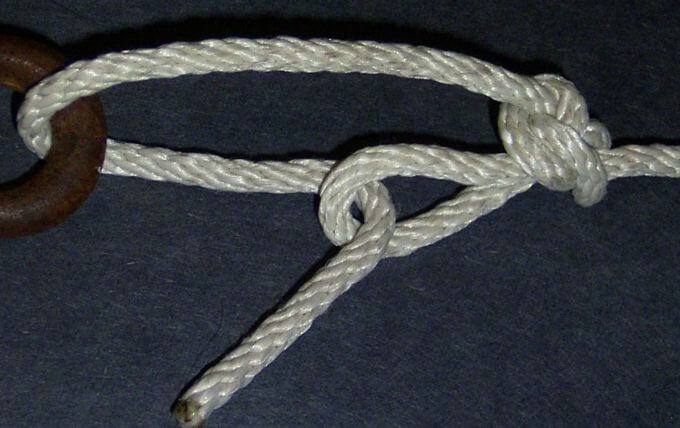
Two Half Hitches: Simple and Secure
Want a dependable finish that we can tie in low light? Two half hitches are our nighttime favorite.Wrap the working end around the anchor (post, ring, or stake).
Pass the working end around the standing part and form a half hitch, then tighten it snug against the anchor.
Repeat to make a second half hitch snug against the first.
Dress the hitches so turns lie neatly, then pull everything tight.
When finishing a trucker’s hitch or securing a guy line, the two half hitches lock the tension quickly and are easy to release after a load.
For extra security, add a stopper knot on the tail.
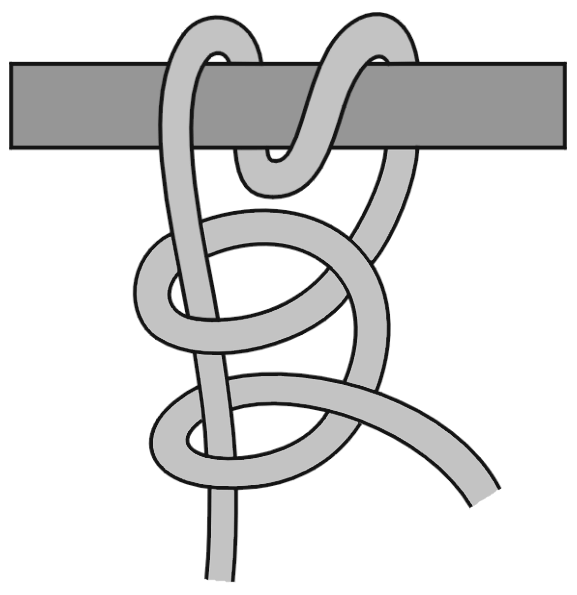
Practice Makes These Knots Second Nature
We should practice each knot until it becomes fast and reliable; these six make our camps safer, quicker, and more adaptable. Try them at home, share your results with us, and join the community. Start practicing today and show your progress.



